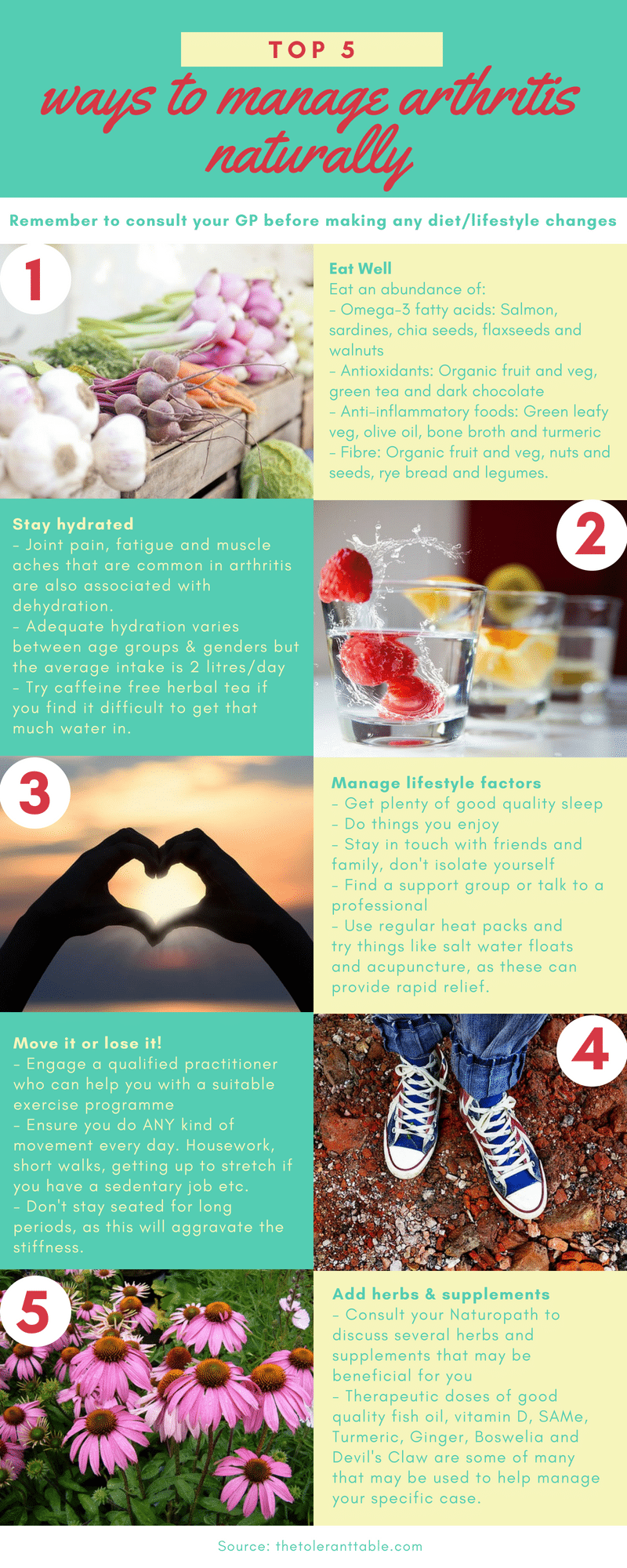I am never more aware of the fact that I have lasting effects from arthritis flares than I am in winter. And I am equally never more thankful about the fact that naturopathic management of arthritis means my symptoms can remain well controlled.
Arthritis is one of the most prevalent chronic conditions in Australia with approximately four million people being affected (1). The form of arthritis that I was diagnosed with is Ankylosing spondylitis (AS), however there are over 100 different types that have been identified. The most common being Rheumatoid arthritis, Osteoarthritis, Psoriatic arthritis, Gout and Fibromyalgia (2).
The respective forms of arthritis all present with their own unique signs and symptoms. However, something that is quite common across many of them is inflammation, pain, stiffness and often, swelling (2). Several can also result in loss of mobility and a variety of other health complications (3).
Arthritis and the seasons
There is no conclusive scientific research as yet substantiating the anecdotal claims that arthritis can be very much affected by the seasons. Ask anyone who has it though and they’ll tell you it is. Some people with arthritis are affected by both heat and cold whereas others only notice symptom aggravation in the cold. At this point in time that’s me. I can become a bit like the Tin Man from the Wizard of Oz in winter if I let my treatment plan slip. A very strong driving force behind making sure I don’t.
I see winter, and if you’re so affected, summer, as the two seasons where you need to do that little bit extra to keep yourself in tip-top shape and as pain-free and limber as possible.
Naturopathic management of arthritis – Top five things you can do to reduce symptoms
I have managed my own arthritis naturally for the last six years. Incorporating a wholefoods diet and a variety of natural therapies into my daily routine is what has helped me achieve this. By all accounts, my own and medical tests, the AS has remained in remission. That being said, I had some monster flares when it was active and some joint damage was done at the time. All of which means, I continue to use naturopathic treatment to manage any symptoms very closely.
I have a list below of the top five most effective and all natural treatments that have helped both me and my clients remain well, particularly in the cooler months. There’s also an Infographic at the end that you can print off to help you keep these points front of mind every day.
1. Eat wholesome, nourishing meals
Ensuring wholefoods are the basis of your diet is absolutely essential. You should include an abundance of omega-3 fatty acids, antioxidant rich foods, anti-inflammatory foods and fibre. A Mediterranean style diet is always a good one to aim for given it covers all of these. It is full to the brim with fruit, vegetables, legumes, nuts, seeds, olive oil and seafood. It also has smaller amounts of red meat, dairy products and grains (4). I love the addition of a little red wine too! It also ensures that highly processed and highly refined foods (things like packet foods, white breads and sugar etc.) are removed, which is ideal. If you are going to be enjoying the occasional slice of bread in your diet make good choices. A piece of lovely rye sourdough would be the best.
2. Stay hydrated
Did you know that dehydration can mimic some of the symptoms of arthritis? Joint pain and fatigue for starters (5). It can also reduce nutrient intake, impair cognitive function and affect proper cardiac function. Adequate hydration varies between the age groups and across genders (5) but the average amount suggested is 2 litres daily. If you find this challenging, remember that an abundance of fruit and veg add to your water intake as do things like caffeine free herbal teas. This is a great little video from TED-Ed on the damaging effects of dehydration.
3. Consider lifestyle factors
Keeping on top of nourishing things for the body, mind and soul can feel impossible when you’re in pain, can’t it? If you’re anything like me you get grumpy and snappy and a bit bah humbug about everything. It’s important to remember though that your emotional health and ability to remain positive can have a big impact on the pain you feel (6). There are plenty of things you can do to help you with these including getting plenty of good quality sleep, doing things you love, seeing friends and family, not isolating yourself and finding support. I would also add a few little extras to that, which include regular heat packs, salt water floats and acupuncture. All of which I find extremely relaxing but they can also provide quite rapid relief.
Also – if it’s winter, remember to rug up and stay warm. And if it’s summer, don’t overheat!
4. Move it or lose it!
Movement is so incredibly important for everyone, but never more so than when you have arthritis. I know all too well how little you feel like moving when you’re stiff and sore, but this is precisely when you need to. Engaging a qualified professional who can help you with a suitable exercise programme is essential at some point but just doing ANY kind of movement throughout the day will help keep you more limber. Housework, short walks, getting up to stretch if you have a sedentary job etc., it all adds up.
5. Add supportive herbs and supplements
When you’re experiencing an increase in inflammation, pain and stiffness – you may find you need more support than diet and lifestyle alone. Good quality supplements containing things such as fish oil, vitamin D, SAMe, Turmeric, Ginger, Boswelia and Devil’s claw to name but a few can all be extremely helpful. It is critical to ensure you are getting these supplements from a reputable source because not all are created equal. Sadly not all are top quality either, which can result in little to no change in your symptom picture.
If you need a daily reminder of the top five points outlined here, you can print out the infographic below and stick it on the fridge. Consider it part of your arthritis management toolbox but please remember it does not and should not replace the advice you are given by your specialist.
To learn more about how naturopathy can help you manage your arthritis, book in for a consultation so we can create a unique treatment plan for you.

Resources
1. Schofield, D, Shrestha, R & Cunich, M 2016, ‘Counting The Cost Part 2 Economic Costs. The Current and Future Burden of Arthritis’, Arthritis Australia, viewed 20 June 2018
2. Arthritis Foundation 2018, ‘Different Types of Arthritis can cause different types of pain’, Sources of Arthritis Pain, viewed 22 June 2018
3. Hunter, D & Riordan, E 2014, ‘The impact of arthritis on pain and quality of life: an Australian survey’, International Journal of Rheumatic Diseases, vol. 17, pp.149-155, viewed 20 June 2018
4. Miggiano, GA & Gagliardi, L 2005, ‘Diet, nutrition and rheumatoid arthritis’, La Clinlica Terapeutica, vol. 3, pp.115-123, viewed 24 June 2018
5. Riebl, S & Davy, B 2013, ‘The Hydration Equation: Update on Water Balance and Cognitive Performance’, ACSM’s Health & Fitness Journal, vol. 6, pp. 21-28, viewed 25 June 2018
6. Rezaei, F, Doost, H, Molavi, H, Abdei, M & Karimifar, M 2014, ‘Depression and pain in patients with rheumatoid arthritis: Mediating role of illness perception’, The Egyptian Rheumatologist, vol. 36, pp. 57-64, viewed 25 June 2018


Very interesting and informative article Gabby! Eric has rheumatoid arthritis? Would the same advice help him, as well?
Thanks, Beth! The information here can be supportive for several forms of arthritis however, he should most definitely discuss with his specialist before changing anything.